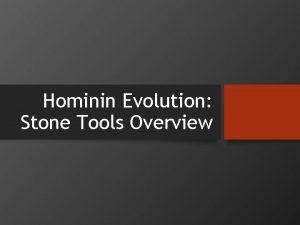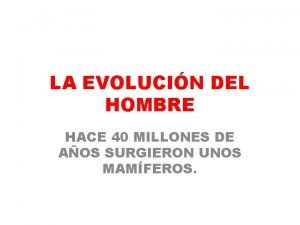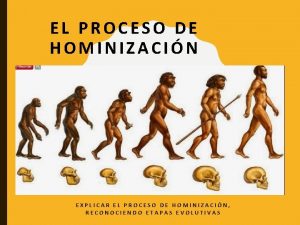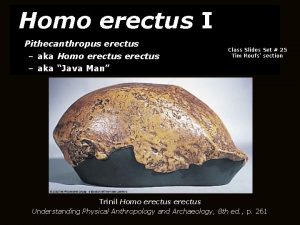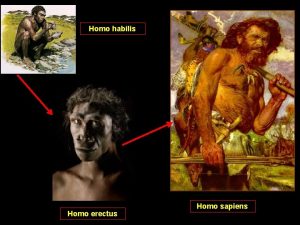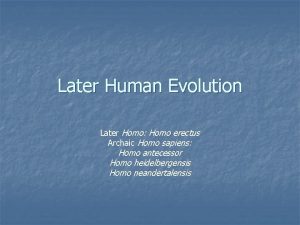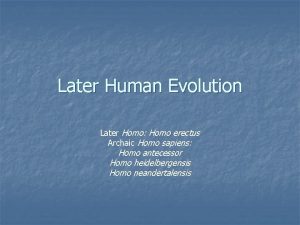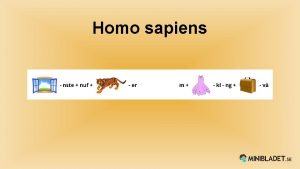Evolution Timeline Who was Homo Erectus Homo Erectus










- Slides: 10


Evolution Timeline

Who was Homo Erectus? • Homo Erectus was the first hominid (early human) to be bipedal, or walk on two feet. • Homo Erectus was one of the first hominids to have similar traits to Homo Sapiens.

Eugene Dubois • Homo Erectus was first discovered by Eugene Dubois in Java. Dubois named it Homo Erectus after he made further discoveries.

Nariokotome Boy • Nariokotome Boy is the most complete early human skeleton ever found. • It was an erectus found by R. Leakey and A. Walker in Narioktome, Kenya.

Physical Features • Homo Erectus looked considerably ape like compared to modern humans. • Homo Erectus had a bigger brain size than its early ancestors. • Brow ridge was thicker and extended over eyes.

Advancements • Homo Erectus was the first known hominid to use tools and fire • Homo Erectus was the first hominid capable of an extended childhood. This means that erectus would be a child for longer than a year or two. Unlike an animal such as a dog or cat. • Homo Erectus was the first hominid capable of a more advanced life.

Influence Homo Erectus was the first hominid to show homo sapian traits. This gave archeologists a better incite on how humans evolved.

Conclusion • Homo Erectus is a valuable link in the timeline of evolution • Without homo erectus archeologists would not be able to see hominids development into modern humans.

Bibliography • http: //www. time. com/time/covers/1101010723/timeli ne. html • http: //www. stanford. edu/~harryg/protected/chp 22. ht m • http: //www. archaeologyinfo. com/homoerectus. htm • Pictures from Google. com

